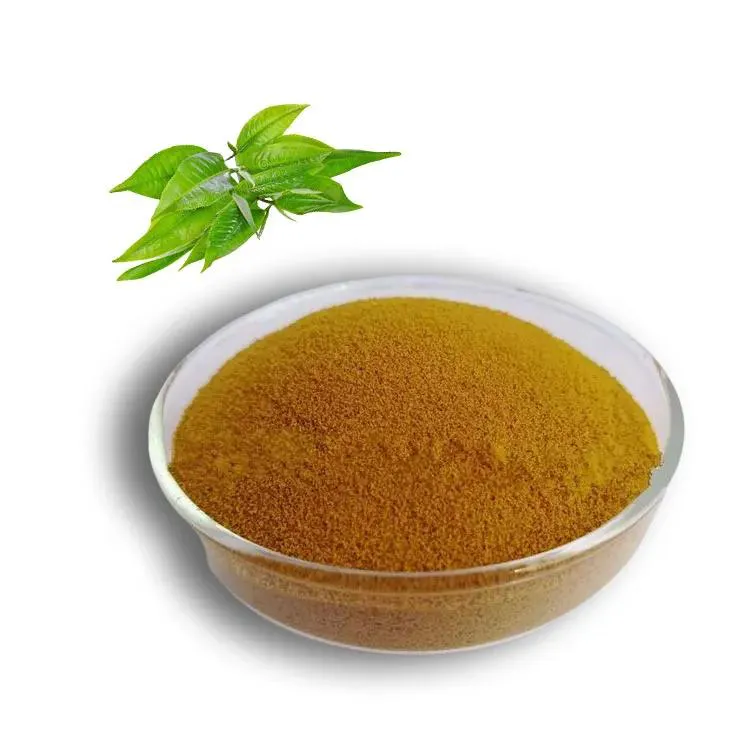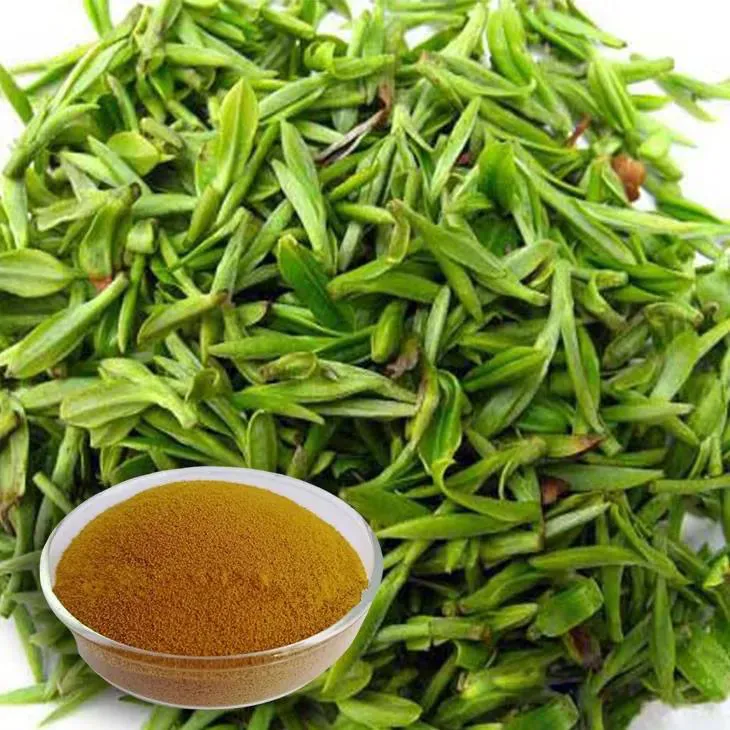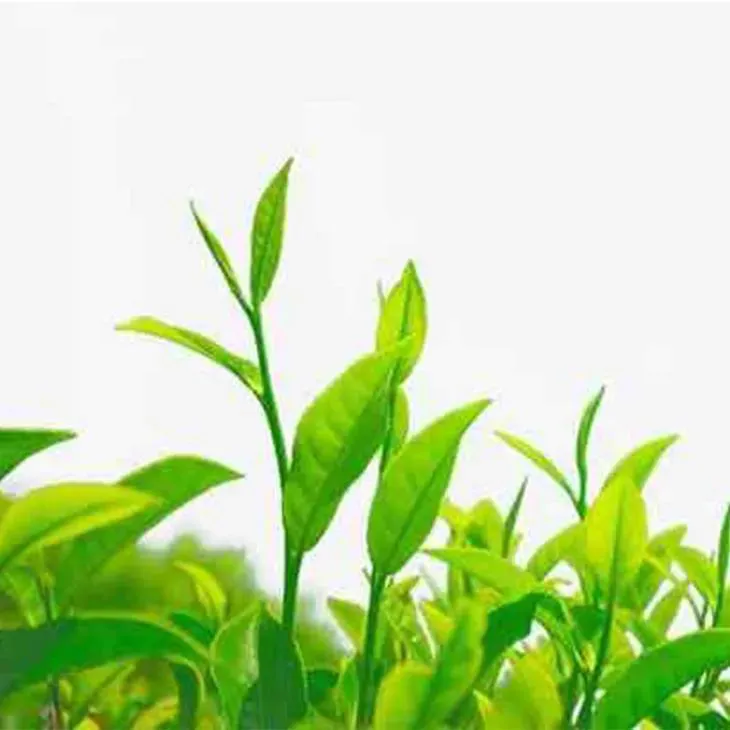- 0086-571-85302990
- sales@greenskybio.com
The best green tea extract on the market.
2024-11-30

Introduction
Green Tea Extract has emerged as a highly sought - after product in recent years, primarily due to its extensive range of health benefits. It has become a staple in the health and wellness industry, being incorporated into various products such as dietary supplements, skincare items, and functional foods. However, with the growing market demand, the variety of Green Tea Extracts available has also increased, making it challenging for consumers to determine which one is the best. This article will explore the key factors to consider when looking for the top - quality Green Tea Extract on the market.

The Source of Green Tea
The origin of the green tea leaves used in the extract is of utmost importance. Different regions around the world are known for their unique tea - growing conditions, which can significantly impact the quality and composition of the final product. Two of the most renowned regions for high - quality green tea production are Japan and certain parts of China.
Japan
Japan has a long - standing tradition of tea cultivation. The country's climate, with its distinct seasons and relatively high humidity in some areas, is conducive to the growth of green tea. Japanese green tea, such as Sencha, Matcha, and Gyokuro, is highly regarded for its delicate flavor and rich nutrient content. The tea leaves are typically shade - grown, which enhances the production of certain compounds, like chlorophyll and amino acids. This results in a unique taste profile and potentially higher levels of beneficial substances in the green tea extract sourced from Japanese tea leaves.
China
China is the birthplace of tea, and it has a vast and diverse range of tea - growing regions. Areas like Zhejiang, Anhui, and Fujian are famous for their green tea production. The varied climates and soil types across these regions contribute to the production of different types of green tea, each with its own characteristics. For example, Longjing tea from Zhejiang is known for its flat - shaped leaves, fresh aroma, and smooth taste. The tea plants in China have been cultivated for centuries, and the traditional farming methods, combined with the favorable natural conditions, can lead to the production of high - quality green tea leaves suitable for extraction. Green tea extract sourced from Chinese green tea may contain a rich blend of polyphenols, flavonoids, and other bioactive compounds.

The Extraction Method
The extraction method employed is a critical factor in determining the quality of green tea extract. Different extraction techniques can have a significant impact on the preservation and concentration of the active compounds present in the green tea leaves.
Traditional Extraction Methods
Traditional extraction methods for green tea include solvent extraction, often using water or alcohol as solvents. While these methods are relatively simple and cost - effective, they may have some limitations. For example, water extraction may not be as efficient in extracting all the desired compounds, especially the more hydrophobic ones. Alcohol extraction, on the other hand, may introduce some unwanted residues or affect the taste of the final extract. Additionally, traditional methods may not be as precise in controlling the concentration of the active ingredients, which can lead to variability in the quality of the green tea extract.
Supercritical CO2 Extraction
Supercritical CO2 extraction is an advanced technique that has gained popularity in recent years for green tea extraction. In this method, carbon dioxide is used in its supercritical state, which has properties between a gas and a liquid. This allows it to penetrate the tea leaves effectively and extract a wide range of compounds, especially the active ones like catechins. One of the main advantages of supercritical CO2 extraction is its ability to preserve the integrity of the active compounds better than traditional methods. It can also be more precise in controlling the extraction process, resulting in a more standardized product. Moreover, since CO2 is a gas at normal conditions, it can be easily removed from the final extract, leaving behind a purer product without the need for complex solvent removal processes.

Standardization of Active Ingredients
The best green tea extracts on the market are typically standardized to contain a specific amount of key active ingredients. This is crucial for ensuring consistent quality and potency across different batches of the product.
- Catechins: Catechins are one of the most important groups of bioactive compounds in green tea. The most well - known catechin in green tea is epigallocatechin - 3 - gallate (EGCG). Standardizing the amount of catechins in the green tea extract helps to ensure that consumers are getting a product with a known and consistent level of these beneficial compounds. For example, a high - quality green tea extract may be standardized to contain a certain percentage of EGCG, which has been associated with various health benefits such as antioxidant, anti - inflammatory, and potential anti - cancer properties.
- Polyphenols: Polyphenols are a broad class of compounds found in green tea, and they contribute to its antioxidant activity. Standardizing the polyphenol content helps to maintain the overall quality and effectiveness of the green tea extract. Different products may target different levels of polyphenol standardization depending on their intended use, whether it is for general health promotion or for specific therapeutic applications.
Purity of the Green Tea Extract
Purity is another essential aspect to consider when evaluating green tea extracts. A top - notch green tea extract should be free from contaminants and additives, providing consumers with a pure and natural product.
Contaminant - Free
Green tea extracts should be free from pesticides, heavy metals, and other contaminants. Tea plants can absorb pesticides and heavy metals from the soil or the environment during their growth. Therefore, it is crucial to ensure that the source of the green tea used in the extract is from farms that follow strict agricultural practices to minimize contamination. Additionally, proper manufacturing processes should be in place to further purify the extract and remove any potential contaminants that may have been present in the raw materials.
Additive - Free
Some low - quality green tea extracts may contain additives such as artificial flavors, colors, or preservatives. However, a high - quality green tea extract should be free from these unnecessary additives. Consumers who are interested in the natural health benefits of green tea extract would prefer a product that is pure and unadulterated. This not only ensures the integrity of the product but also reduces the risk of potential adverse reactions to additives.
Conclusion
In conclusion, when looking for the best green tea extract on the market, several factors need to be carefully considered. The source of the green tea, the extraction method, the standardization of active ingredients, and the purity of the product all play crucial roles in determining the quality and effectiveness of the green tea extract. By understanding these factors, consumers can make more informed decisions and choose a green tea extract that meets their health and wellness needs.
FAQ:
Question 1: What makes the source of green tea important for green tea extract?
High - quality green tea extracts are often sourced from regions like Japan or certain parts of China known for premium tea production. These regions have ideal climates and soil conditions, which lead to a rich polyphenol content in the tea leaves. This polyphenol content is significant as it is related to the health benefits associated with green tea extract.
Question 2: How does the extraction method affect the quality of green tea extract?
Advanced extraction techniques such as supercritical CO2 extraction can preserve the active compounds in green tea, like catechins, more effectively than traditional methods. The better the extraction method in preserving these active compounds, the higher the quality of the green tea extract, as these compounds are responsible for many of its health - promoting properties.
Question 3: Why is standardization important for green tea extract?
Standardization of green tea extract is important because it ensures that the product contains a specific amount of key active ingredients. This consistency in the amount of active ingredients guarantees consistent quality and potency. Consumers can then rely on the product to have the same expected effects each time they use it.
Question 4: What should one look for in terms of purity when choosing green tea extract?
When choosing green tea extract, one should look for a product that is free from contaminants and additives. A pure green tea extract provides a natural product, reducing the risk of any unwanted side - effects or interference from other substances. This ensures that consumers are getting the full benefits of the green tea extract in its purest form.
Question 5: How can consumers ensure they are buying the best green tea extract?
Consumers can ensure they are buying the best green tea extract by considering the source of the green tea, the extraction method, standardization, and purity. They should look for products sourced from regions known for good tea production, extracted using advanced techniques, standardized for key active ingredients, and free from contaminants and additives.
Related literature
- The Health Benefits of Green Tea Extract: A Comprehensive Review"
- "Green Tea Extract: Quality Control and Standardization"
- "Sourcing and Extraction of Green Tea for Optimal Extract Quality"
- ▶ Hesperidin
- ▶ citrus bioflavonoids
- ▶ plant extract
- ▶ lycopene
- ▶ Diosmin
- ▶ Grape seed extract
- ▶ Sea buckthorn Juice Powder
- ▶ Beetroot powder
- ▶ Hops Extract
- ▶ Artichoke Extract
- ▶ Reishi mushroom extract
- ▶ Astaxanthin
- ▶ Green Tea Extract
- ▶ Curcumin Extract
- ▶ Horse Chestnut Extract
- ▶ Other Problems
- ▶ Boswellia Serrata Extract
- ▶ Resveratrol Extract
- ▶ Marigold Extract
- ▶ Grape Leaf Extract
- ▶ blog3
- ▶ blog4
-
Mulberry Extract Suppliers.
2024-11-30
-
Active components in aguaje extract.
2024-11-30
-
Standard - process cocoa extract.
2024-11-30
-
Organic Saw Palmetto Extract Powder Factory.
2024-11-30
-
Suppliers of Organic Açai Extract Powder.
2024-11-30
-
Extraction process of black pepper extract.
2024-11-30
-
Wholesale L - Tyrosine Suppliers.
2024-11-30
-
The best milk thistle extract in 2024.
2024-11-30
-
Agaricus Blazei Extract
2024-11-30
-
Natural grape seed extract
2024-11-30
-
Rose Hip Extract
2024-11-30
-
Passionflower Extract
2024-11-30
-
Green Tea Extract
2024-11-30
-
Lotus leaf extract
2024-11-30
-
Ginseng Root Extract
2024-11-30
-
Motherwort Extract
2024-11-30
-
Epimedium extract powder
2024-11-30
-
Lemon Juice Powder
2024-11-30




















